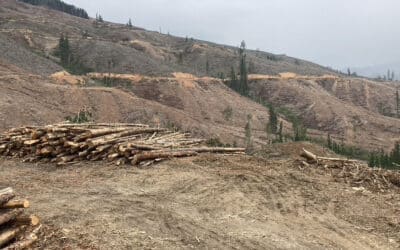by Oakley Shelton-Thomas
We need a radical change in the way we produce energy. But decision makers are being seduced by ‘fixes’ promoted by the fossil fuel industry in an attempt to keep us locked into their failed model. The most prominent is something called Carbon Capture and Storage or CCS. It’s a set of unproven technologies for fossil fuel companies to capture carbon dioxide at the smokestack or in the atmosphere, transport it in pipelines and inject it underground.
If it sounds too good to be true, it is. Despite optimistic projections and extensive government support, CCS projects are obscenely expensive. Most have been shelved after delays and cost blowouts; the only U.S. CCS power plant ever completed cost several times what it would have to simply build comparable renewable energy capacity.
Cost aside, CCS plants hurt the climate, because they burn more fuel to power the equipment to capture carbon in the first place. As Food & Water Watch found in its recent report The Case Against Carbon Capture: False Claims and New Pollution, even after accounting for extensive methane emissions from fuel production, CCS only reduces a fraction of the emissions from electricity generation. And increased fuel use would worsen the unjust economic and environmental burdens that already fall mostly on vulnerable communities.
Beyond CCS-equipped power plants, other technologies, including CCS used with bioenergy and Direct Air Capture (DAC) technology, promise to magically remove even more atmospheric carbon sometime in the future.
Bioenergy facilities grow crops and burn them for fuel. When equipped with carbon capture, they are supposedly ‘carbon negative’ because carbon is sequestered in growing crops. But this shady carbon math doesn’t factor in the energy-heavy agricultural inputs and land use trade-offs; biofuels could require up to 80 percent of current cropland, threatening food security.
The DAC approach uses fans to capture airborne CO2. Industry enthusiasts call this the ultimate ‘everyone wins’ scenario. Except it doesn’t work in the real world. DAC is energy intensive and expensive, in part because CO2 is only a small portion of ambient air. And if powered with natural gas or coal, DAC would create more CO2 than it captures.
The problems of CCS get worse once you try to do something with any carbon you capture. It must be stored underground for centuries. Most damningly, storage would depend on inherently leaky infrastructure and dangerous practices like pipelines, underground gas storage and high-pressure injection.
To dodge these problems, oil companies spend millions hyping “cool” potential uses for CCS like vodka making. But the only real path for the industry is something called Enhanced Oil Recovery, a process to inject captured carbon into mature, low-pressure oil reservoirs to drive out remaining oil. In other words, they’d use captured carbon to extract and burn more fossil fuels, defeating the whole point of CCS in the first place.
Despite these absurdities, fossil fuel companies desperately push CCS as a cure-all. They embrace CCS because it allows them to appear to be doing something about climate change while really maintaining business as usual.
Unfortunately, too many decision makers buy into the hype. The Energy Department recently announced that it would give away $22 million for research “to achieve breakthroughs” in CCS. And even though it’s ineffective, many federal lawmakers still highlight CCS as a key part of their climate plans. Meanwhile, Pennsylvania lawmakers are pushing to classify CCS as a form of renewable energy, while investors are trying to use the promise of CCS to save a coal plant in New Mexico that might close due to the state’s climate regulations.
There’s no future for fossil fuels, with or without CCS. Carbon emissions are the industry’s downfall, and there’s no magic cure for that. Instead of gimmicky technology, we must have a just transition away from fossil fuels and towards real clean energy.



